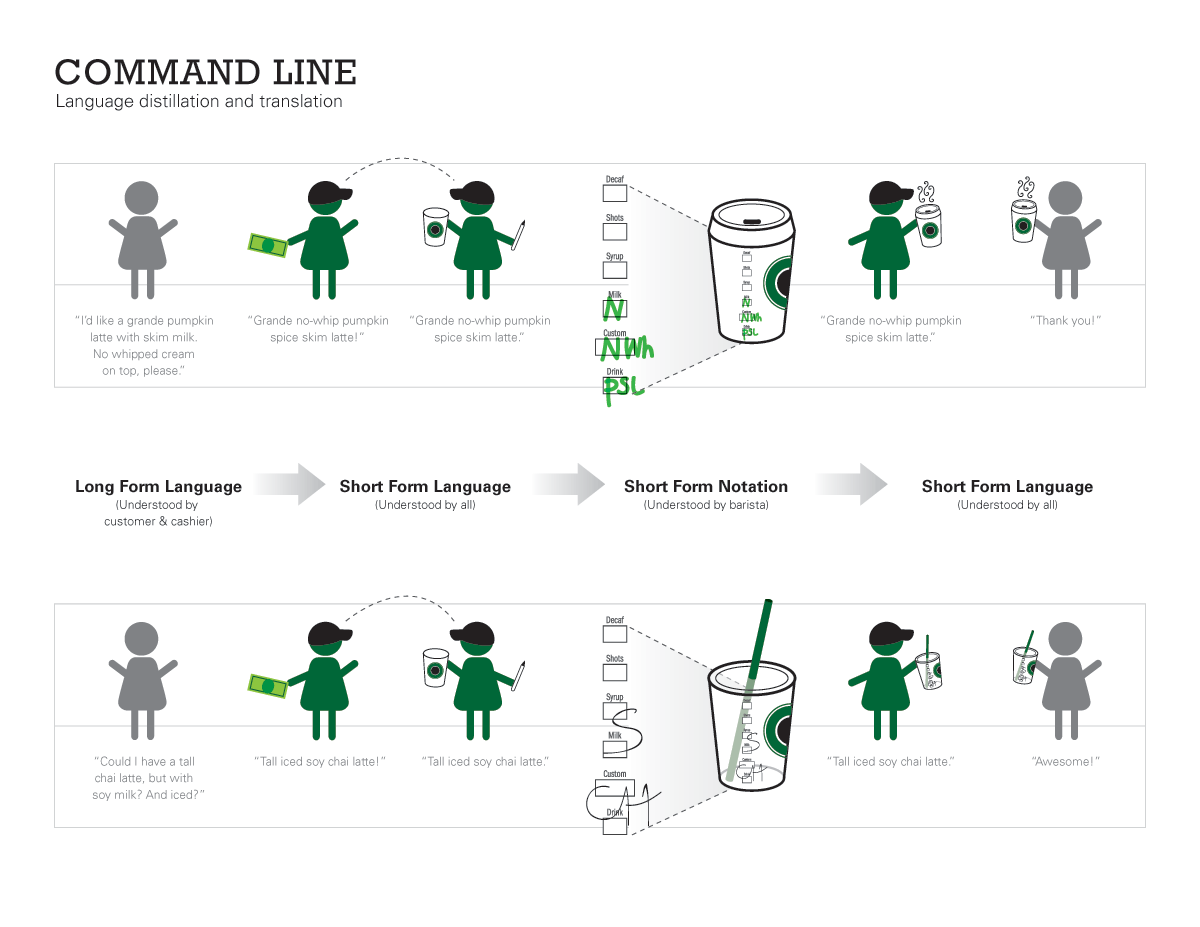Tags
#Service process
Follow the APPLE five steps of service
Step one: Approach customers with a personalized warm welcome
Within 10 seconds of entering a store (regardless of how busy it is), greet each customer with a friendly warm welcome. The key here is to make eye contact and be fully committed to offering a customized, unique, and meaningful experience.
Step two: Probe politely to understand all of the customer’s needs
Never push for a sale. Instead, ask open-ended questions that start with 'How' and 'What.' These questions encourage customers to open up more about their needs leading to a more meaningful and insightful conversation. Apple employees preempt these questions by asking permission. This can sound like: "I’d like to take you on a tour of the iPad, but before I do, may I ask what you’ll be using the iPad for?"
Step three: Present a solution for the customer to take home that day
Customers leave happy when they are provided with a solution, even if its not the one they originally expected. So, if customers are not ready to make a purchase, Apple employees offer to sign them up for a free in-store class to become more familiar with the product. Also, if customers can't get an appointment at the Genius Bar, employees look for openings at nearby locations.
Step four: Listen for and resolve any issues or concerns
Actively listen and repeat back the customer's needs and concerns, so they know they are heard. Then tailor the conversation around resolving those issues. If a customer cares about high-quality photos, don't spend time talking about video games. Apple employees also always reinforce that they do not work on commission and that their only goal is to help a customer grow.
Step five: End with a fond farewell and an invitation to return
Always make customers feel good about the experience. Escort the customer to the door, thank them, and invite them to return again with a "We'll see you next time." Also, if a purchase was made, congratulate them, summarize the benefits one last time, and reinforce the good decision they made.
Follow the 3 Fs of empathy
Apple store employees deal with frustrated, worried, and angry customers all the time. While they are trained to "not apologize for the business [or] the technology," there is a heavy emphasis on being empathetic to the customer's problem. To do this, Apple trains their Geniuses to follow the 3 Fs:
- Feel: First acknowledge the customer's feelings
- Felt: Let the customer know they are not alone and that either you or someone else has been in the same position.
- Found: Finally, provide an opportunity for the customer to move beyond their initial objection or negative feeling.
Reset internal clocks to make wait times less painful
Waiting can be excruciating. Apple solves this problem by altering customers' perceptions of how long they are waiting. The concept behind this is simple: Every time you check-in with, smile at, or say 'hello' to waiting customers, their internal clocks are reset making an 8-minute wait feel like two.
At Apple Stores, the first reset happens within 10-seconds of you walking into the store. An employee greets you, takes your name, and assigns you an associate.
Every few minutes after that, a greeter or manager will check in with you by name with an update on the associate's availability. By the time the associate arrives, you don't even realize how long you have been waiting while also feel acknowledged and looked after.
Deliver second mile service
Mile 1: Chick-fil-A's Core 4 ingredients
- Make eye contact to show you care and that you are paying attention.
- Smile and strive to see the customer smile in return. A smile shows that you actually like being at work.
- Speak enthusiastically. Make it sound like you are smiling when you talk. Turn 'okay' into "of course," and "do you need help" into 'hey, anything I can help you with?"
- Stay connected. Start building relationships by making small talk—ask a question or give a compliment.
Mile 2: Three required ingredients mixed with three necessary behaviors
- Deliver meals to the table.
- Perform table touch-ins every 10-15 minutes. Make small talk, thank guests for coming in, or just remind them that you will take away their tray when they're done.
- Carry large orders to a customer's car. Don't ask, just do it and say "I will be assisting you to your car."
- Be genuine. Act as if the customer in front of you is the only customer you have that day. Actively listen and follow your warmhearted impulses by offering to pick up the tab for anyone seeming down.
- Be proactive and anticipate needs. Bring extra napkins and condiments during table touch-ins, hold open doors, take away garbage, and have highchairs at the ready.
- Be personal. Always use the guest's name at every touchpoint, from the warm welcome to the fond farewell. Servers look at the name on the receipt so that they can use the customer's name when delivering the meal.
Greet guests using the 10/5 Way
Ritz-Carlton employees are trained to make eye contact and smile at guests if they are 10 feet away. If that guest walks within five feet, the employee than needs to say 'hello.' The 10/5 way was created to help break the ice and remove any insecurities a guest may have about interrupting an employee.
Set clear standards for service excellence
On their first day, each Starbucks partner (employee) is given a little 'Green Apron' book that fits neatly into their apron pocket. The book outlines the Five Ways of Being. which is the framework that the Starbucks Experience is built upon.
- Be Welcoming: Offer everyone a sense of belonging.
It's not just about writing a person's name on a cup. It's about taking the time to know their name, needs, and preferences when they walk in the door. As a study aid, some partners even keep spreadsheets containing customer preferences. - Be Genuine: Connect, discover, respond.
Connect with customers, so they know they are not just a "wallet with a human attached." If they are visibly having a bad day, try to make it better. Discover their wants and desires by asking questions that require more than a 'yes' or 'no' answer and listening to their response. You might just learn about needs that they didn't know they had. Finally, respond with respect and attention no matter who they are. - Be Considerate: Take care of yourself, each other, and the environment.
Don't just think of the now but be mindful of the future well-being of everyone and everything. It's not just about short-term gain but rather long-term survival and prosperity. - Be Knowledgeable: Love what you do. Share it with others.
"Sharing knowledge with customers makes for more sophisticated consumers." They in turn begin to understand, appreciate, and explore the subtle nuances of what you have to offer. - Be Involved: Connect with one another, with the company, and with your community.
Look around to see how to make things better, and then act on it. Partners have hosted open-mic nights, provided free-training to the unemployed, and even taken sign language lessons, so they can communicate with their customers.
Personalization
Starbucks has over 87,000 possible drink orders, not including requests for special temperatures and various pumps of flavor—and baristas are expected to make them all. In fact, the Starbucks 'just say yes' policy, does not allow baristas to ever say 'no' to an order, no matter how crazy it may seem. If ingredients aren't available, suitable replacements are offered or an alternate drink is provided at no charge.
Keep it LEAN to improve customer satisfaction
Starbucks started using LEAN management techniques after seeing how one store manager took it upon herself to implement them and saw great results.
LEAN techniques removed any process that wasted time or took away from the customer experience. This allowed baristas to spend more time talking with customers and less time searching for things that were either in the wrong place or completely missing.
But former CEO, Howard Schultz feared that these practices would make Starbucks feel more like a factory run by a corporation rather than a local coffee shop. To avoid this, he ensured that headquarters would only provide the tools and training for LEAN techniques, and left it to the store managers to implement these techniques in their own unique way.
Some of the ways that Starbucks reduced redundancies and waste was to:
- Create color-coded preparation instructions for quick retention and understanding
- Move whips, drizzles, and chocolates closer to where they were needed to reduce steps behind the counter
- Use acronyms on coffee cups to help partners get every detail of the drink right and make those highly customized orders repeatable when they were ready
- Throw out the corporate manuals on supply room arrangements and customize everything for each specific store
- Take orders before customers get to the cash register
These changes might seem obvious but it wasn't until they started looking at every movement through LEAN that inefficiencies became clear. Within 6 months of implementation Starbucks customer satisfaction and quality scores had improved, productivity and revenue increased, and turnover dropped significantly.
Write out your quality service standards
To set the baseline standard for customer service, Umpqua Bank documented precisely what was expected of associates when working with customers. A few of these unnegotiable standards include:
- We will smile and acknowledge our customers immediately as they walk through the door.
- We will stand to greet our customers.
- We will consistently wear our name badges.
- We will call our customers by name at least twice.
- We will Deliver Plus One—always looking for opportunities to do a little extra.
- We will hand out our business cards to offer additional help or to personalize our service.
- We will thank our customers sincerely for doing business with us.
Take turns being a greeter for the day
Umpqua Bank had trouble getting staff to look up from their work and acknowledge customers when they entered a store. After failing to change this behavior with memos and pep talks, former CEO Ray Davis implemented a greeter for the day program.
All in-store staff, from tellers to loan assistants, had to take turns standing by the front door wearing a corsage or boutonniere and greeting customers as they walked in. This gave staff the needed experience welcoming customers, making eye contact with them, and learning their names.
At first, the employees hated the idea, but Umpqua Bank kept it up. It took several months, but eventually, welcoming customers became a natural part of everyone's job, and the program was sunset.





